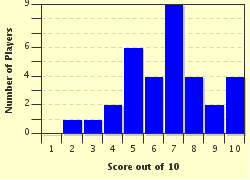Quiz Answer Key and Fun Facts
1. The native people who lived in northwestern Canada knew about the gold that was found there at the end of the 19th century.
2. European explorers who had previously come to northwestern Canada had heard about the gold. Which local commodity, however, held more value to them?
3. Who is credited with the first discovery of gold in northwestern Canada in 1896 that led to the gold rush and stampede?
4. In what region of northwestern Canada was gold discovered in 1896?
5. Which of the following passes was one of the routes that would-be miners could take to northwestern Canada during the gold rush of 1896-1899?
6. The Canadian government strictly regulated the gold rush in 1896 in an attempt to ensure the safety of the miners. Which of the following was part of the requirement?
7. Which of the following was NOT a factor in contributing to the gold rush stampede of 1897 in Canada?
8. All of the trails to the gold fields in 1897 Canada led to one river. Travel on which river was necessary in order for the miner to reach his final destination?
9. During the gold stampede of 1897 in Canada, the border between the United States and Canada were disputed.
10. What new city was created at the beginning of the gold stampedge of 1897 by Joe Ladue and Arthur Harper? Named for the director of the Canadian Geological Survey, it quickly became the center of the Canadian gold rush.
Source: Author
ponycargirl
This quiz was reviewed by FunTrivia editor
gtho4 before going online.
Any errors found in FunTrivia content are routinely corrected through our feedback system.

